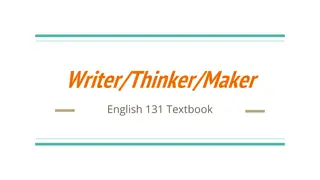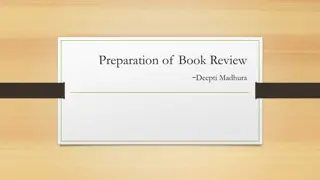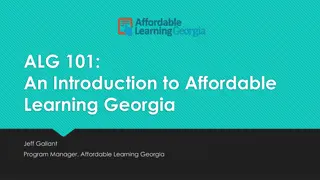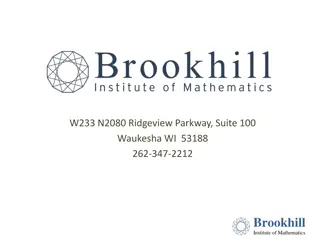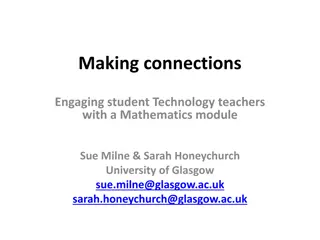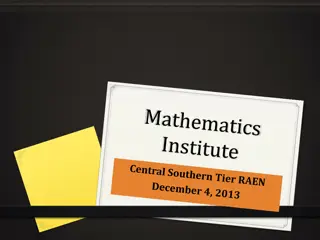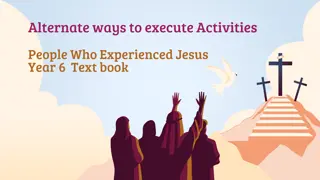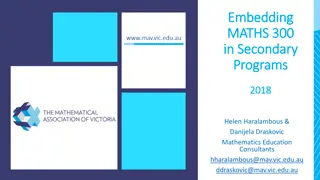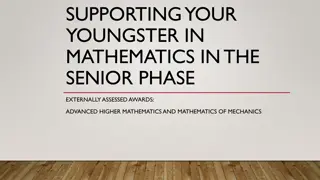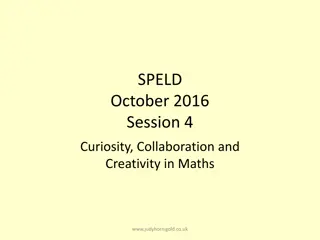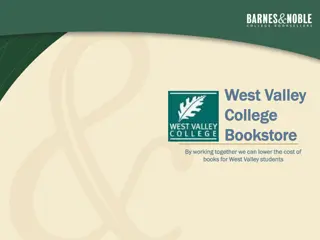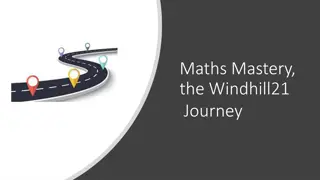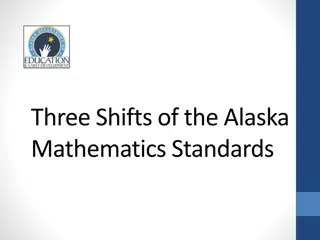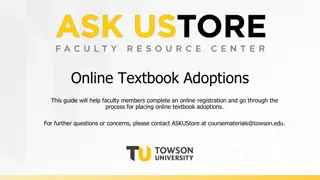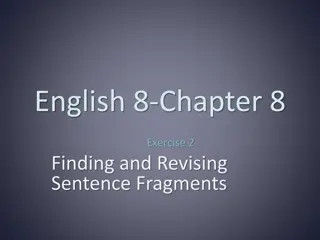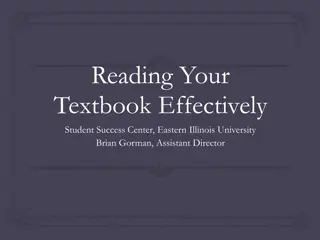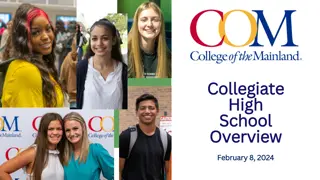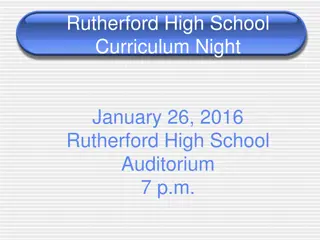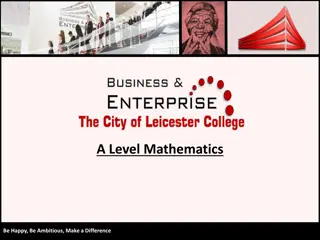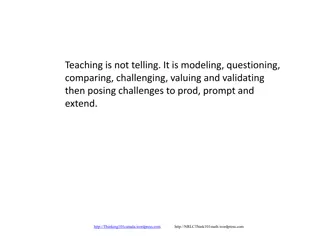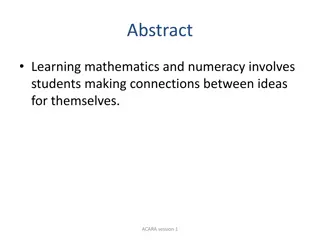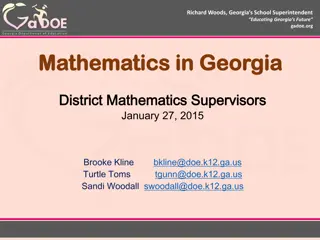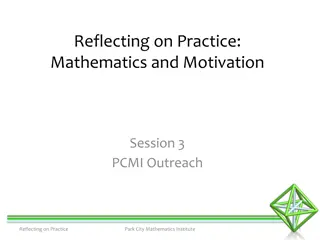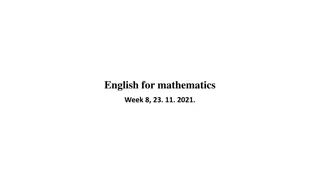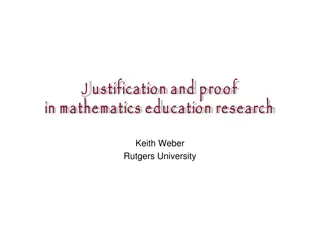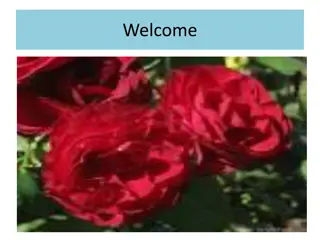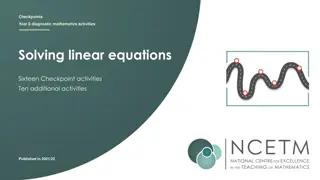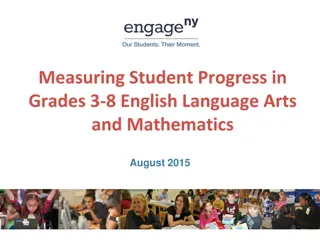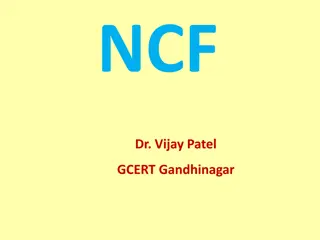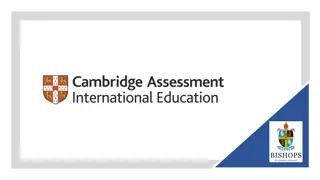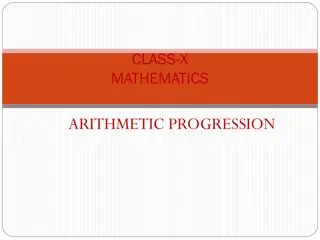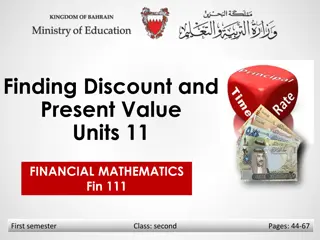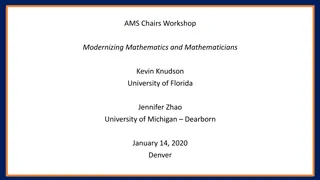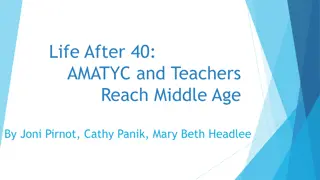Engaging Mathematics Students Beyond the Textbook
Explore innovative methods to involve mathematics students in active learning beyond traditional textbooks. The session delves into practical problem-solving activities, contrasting textbook content with real-life applications, and fostering collaborative learning environments. Embrace a dynamic approach to math education for enhanced student engagement and comprehension.
Download Presentation

Please find below an Image/Link to download the presentation.
The content on the website is provided AS IS for your information and personal use only. It may not be sold, licensed, or shared on other websites without obtaining consent from the author. Download presentation by click this link. If you encounter any issues during the download, it is possible that the publisher has removed the file from their server.
E N D
Presentation Transcript
BEYOND THE TEXTBOOK Getting Mathematics Students Involved in Learning AMATYC- New Orleans November 20, 2015 Janet Teeguarden & Judy Williams
Opening Problem Use your packet of problems to work on the one designated on the sign in the middle of the table: Some problems require technology, graph paper, or other information; there might be some hints on your table. Get started with what you have. Work with your neighbors for just five minutes.
Opening Problem Use your packet of problems to work on the one designated on the sign in the middle of the table: 1. Dividing the tip 5. Cost of flight 2. Makayla 6. Garbage 3. Sara & Sheila 7. Appliances 4. Modeling
Mathematics Texts How is the problem on which you have been working different from what you find in your typical math textbooks?
Typical Developmental Mathematics Textbook Pages Rule Examples Drill Problems Word Problems Applications (some real life but often contrived)
Typical Section of a Text Rule in an orange box or green or tan or.. Examples a lot of them Naked Exercises perhaps 60 to 100 of them in a given section Application Exercises maybe 10 or 12
Application Problems Each of two bowls contains a mixture of black and white marbles. The first bowl has 3/8 of all the marbles. One-half of the marbles in the second bowl are white, and 1/3 of the marbles in the first bowl are black. What fraction of all the marbles is white? Does anybody care???
Application Problems 9 times the length of a swimming pool is the same as 6 times the length plus 150 meters. Find the length of the pool. Wouldn t you just measure it?
Application Problems Charlie is in a desperate hurry to make his flight at the San Francisco airport. He accidentally rushes onto the moving walkway that is traveling opposite to the direction he is running. Find his speed through the airport if the walkway travels at a rate of 4 miles per hour and Charlie runs at a rate of 6 miles per hour. Now really!!! Wouldn t he just get off?
What did we do? Authentic Real-Life Situations Some Mini-Explorations as previews Technology (Scientific and Graphing Calculators) Group Problem-Solving in Class Cohort Groups (Learning Communities) Writing in Mathematics
Educational research offers compelling evidence that students learn mathematics well only when they construct their own mathematical understanding. 1989
To understand what they learn, they must enact for themselves verbs that permeate the mathematics curriculum: examine, represent, transform, solve, apply, prove, communicate.
This happens most readily when students work in groups, engage in discussion, make presentations, and in other ways take charge of their own learning.
AMATYC - 1995 Crossroads in Mathematics
AMATYC Crossroads in Mathematics 1995 Increased attention on solving problems from real applications
AMATYC Crossroads in Mathematics 1995 Use of multiple approaches (numerical, graphical, symbolic, and verbal) to solve meaningful problems
Principles and Standards for School Mathematics National Council of Teachers of Mathematics 2000
NCTM Principles and Standards for School Mathematics 2000 Create and use representations to organize, record, and communicate mathematical ideas.
NCTM Principles and Standards for School Mathematics 2000 Use representations to model and interpret physical, social, and mathematical phenomena.
AMATYC Beyond Crossroads 2006 Authentic problem solving does not necessarily involve memorizing procedures and usually involves being motivated to solve the problems.
AMATYC Beyond Crossroads 2006 For many students, mathematics is viewed as a string of procedures to be memorized, where right answers count more than right thinking.
AMATYC Beyond Crossroads 2006 To build problem-solving skills, faculty need to engage students actively in the learning process, create opportunities for exploration, and help them recognize that there may not be a rule to memorize or algorithm to follow for a given problem.
Ivy Tech Community College Central Region Pre-, Elementary, Intermediate Algebra 2 to 5 explorations for each course Written by the full-time mathematics faculty Provided to all adjuncts, along with all other course materials, including tests Count for 9 to 18 percent of student s grade
*Social Issues (Garbage, Population growth) *Everyday Issues (Credit Card Debt, Savings, Buying Appliances or Cars) *Other Interests (Fat in Diet, Murder Mysteries, Sports, Etc.)
EXPLORATIONS Multiple Representations: Authentic Word Problems Tables Graphs Equations Written Predictions, Comparisons, Meanings, and Conclusions
Beyond the Textbook: Getting Developmental Mathematics Students Involved in Learning Janet E. Teeguarden Ivy Tech Community College MathAMATYC Educator Volume 4 Number 2 February 2013 pp 9-13 http://www.amatyc.org/?page=EducatorFeb2013
What is an authentic problem? Today we will look at some problems that ask students to explore mathematical issues involved in applying a variety of concepts to answer a relevant non-contrived question.
Examples How Should the Tip Be Divided? Credit Card Debt/Savings Plans Predicting the Cost of a Flight Modeling with Data
Dividing the Tip How did this problem challenge you to think and to reflect on the best way to make a decision? I liked that this was a real world scenario; it took away the fear of math for me. I was easily able to see how to come up with a solution based upon my own experiences. After this problem, I can now see that I use math way more in my everyday life then I would have expected (aside from the normal addition, subtraction, etc).
Dividing the Tip How did this problem challenge you to think and to reflect on the best way to make a decision? It challenged me because it reminded me how inaccurate most assumptions are, I need to always remember to analyze and gather ALL information before coming to a conclusion or I could end up with a wrong answer.
Credit Card Makaylas Necklace Student Response: I felt like the problems did pertain to everyday life, especially the problem that pertained to paying a credit card or something the like with interest rate on time and more than the minimum required payment. It gave a perspective of what could happen if you did not maintain responsibility and ownership of your accounts. (And that was even with the credit company's approval to stop further charges and fees!) My Question: 1) Did the problem make sense as a situation where you might actually need to use mathematics?
Credit Card Makaylas Necklace Student Response: Having a more "real world" feel and having scenarios that could happen in real life are helpful. It seems more relatable when talking about an individual or a family that is trying to make good for themselves, rather than a big corporation or business. And let's face it : some of the problems in the book are down right "corny" or written in a way that would never happen in real life. My Question: 2) Compare your interest in this problem with one that might have been taken straight from the textbook.
Credit Card Makaylas Necklace Student Response: .. the scenarios were well written and understandable. many people think that finances are a private matter and people just need to get by the best way they know how. And though I agree with the privacy, I think that it is very beneficial to see how credit card debt can easily accumulate. I think that there should be someway to educate students on how everyday financial decisions can affect their credit score, and how important that credit score is in the future when you are trying to buy a house or get a loan. I think that personal credit and maintenance of credit should be included. My Question: 3) Do you have a suggestion for another scenario which would be of interest to you or your classmates?
Cost of Flight statistics project Student Response: The expected price based on the correlation itself did not strike me as a situation where I personally would use mathematics in real life, but I found the correlation particularly useful when looking at the outlier. From looking at the correlation, you could tell that the airfare to New York was particularly expensive compared to the distance, which would be a handy piece of information when considering a trip. My Question: 1) Did the problem make sense as a situation where you might actually need to use mathematics?
Another statistics project Student Response: I did enjoy working a problem based on real-life current information. I like working with the class statistics in particular because it is interesting to see how I compare to other students (particularly with height, since I am unusually short and I enjoy looking at just how unusually short I am.) My Question: 2) Compare your interest in this problem with one that might have been taken straight from the textbook.
Statistics projects Student Response: For a future problem, I think it would be useful to look at calorie/fat/serving size comparisons between different fast food places (perhaps between similar items). My Question: 3) Do you have a suggestion for another scenario which would be of interest to you or your classmates?
Discuss With Your Neighbors What topic would be of interest to your students as the basis for an authentic problem? What is one reflecting, synthesizing, or applying question you could include? Where might you find the data?
Beyond the Textbook Explorations Technology (Scientific and Graphing Calculators) Authentic Real-Life Situations Group Problem-Solving in Class Writing in Mathematics
Benefits of Going Beyond the Textbook Students see a reason for learning mathematics. Students can apply what they learned in authentic situations and/or use authentic situations to learn. Students explain the meanings of their results, rather than just solving an exercise, getting a number answer, and quitting. Writing in mathematics becomes important.
BEYOND THE TEXTBOOK Thanks for Attending! Janet E. Teeguarden Professor Emerita of Mathematics Ivy Tech Community College Indianapolis, Indiana jteeguar@yahoo.com Judy H. Williams Associate Professor of Mathematics Tidewater Community College Portsmouth, Virginia jwilliams@tcc.edu



